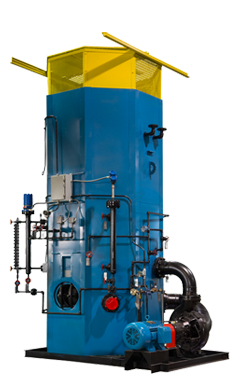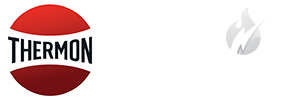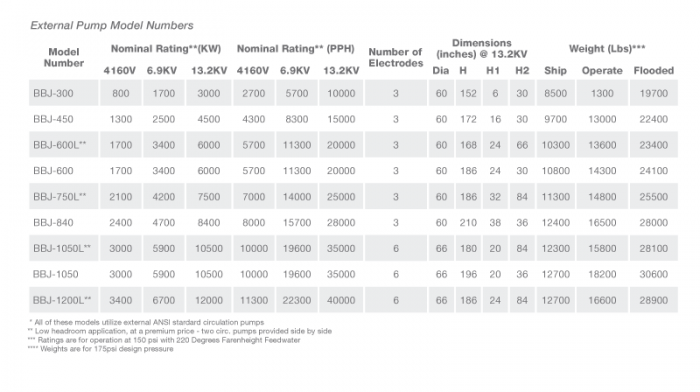 High efficiency – greater than 99%
High efficiency – greater than 99%- High turndown – safely operate as low as 1% of output
- No moving parts eliminates:
Eliminates downtime due to packing leaks around the hydraulically- operated shield positioning system that is present on other designs. No risk of failure of internal mechanical shields. No hydraulic system required. - No dielectric barriers are needed
- No special water treatment
- Industrial grade components
Electrode Steam Boilers
Steam from: 3000 kW to 34,000 kW
Theory of Operation
Vapor Power’s Electrode steam boilers create operating advantages from its unique design which results in a high efficiency, high quality steam boiler. Using electricity as a clean, efficient and easily controlled fuel, all the energy input to the boiler is converted to steam with 99% efficiency. Vapor Power’s electrode generator output is controllable from 0-100%, with neither the limited turndown ratios nor the increasing inefficiency at low output conditions characteristic of fossil-fired boilers. There are no stacks to purchase and there are zero pollutant emissions.
The simplicity of the controls and engineered boiler design results in significantly reduced maintenance. With no moving parts within the boiler, there is less maintenance associated with our units. Even under the conditions of feedwater loss, for example, the electrode is fail-safe as low water in itself affects boiler shutdown, precluding catastrophic failure. There is no heat transfer through tube walls and there will never be tube failures from excessive wall temperature, poor water treatment, or fireside corrosion, since there are no tubes to fail. Heat transfer takes place directly in the water in the steam chamber, thus producing high quality steam of 99.95% purity throughout the operating range.
Applications
With over 100 years of experience in the industry and thousands of operating units, Vapor Power stands ready to assist with any specific application. Common applications include:
Controls
The Electrode generator is locally managed by a PLC-based system that controls every aspect of the boiler which includes control of water level, pressure and KW limit. All safety devices will also be monitored by the PLC. Interface to the PLC by an operator is accomplished through a HMI device that communicates directly with the boiler PLC. Remote data acquisition and control is available via ModBus, Ethernet, Bacnet, or other communication protocol.


